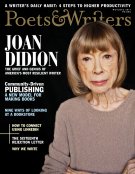Articles about the rise of social media will often lump LinkedIn with Facebook and Twitter, branding it the dull one of the bunch. But LinkedIn, although quieter than the others, is actually extremely useful: a network of professional connections that can be a research tool, a jobs board, a source of trustworthy recommendations, and more. If Facebook is a giant party where everyone swaps pictures of cute babies, and Twitter is a constantly flowing, overlapping conversation, then LinkedIn is a magnificent library—a four-dimensional, seemingly infinite lattice of resumés and CVs.
The success of LinkedIn depends on rules. If you want to add someone to your network, LinkedIn gives you a warning: “Only invite people you know well and who know you.” While Facebook has fake profiles, funny profiles, and literary magazines pretending to be people, LinkedIn strongly discourages all these things. This focus on accuracy and sincerity is what makes LinkedIn fascinating—and potentially useful to writers as they try to advance all aspects of their careers. Here are a few simple rules to get you started.
Be Honest. As you work on your profile—which, on LinkedIn, amounts to a virtual CV—remember always to tell the truth. A large percentage of people are said to lie on their resumés, but there’s no getting away with whoppers when many of the people you may be hoping to network with are former colleagues, either at your day job or at a literary journal that’s published your work.
Be Consistent. What bona fides are you uploading—your professional resumé, your writing credits, or both? I know a fiction writer who only uses LinkedIn for her day job, politely declining offers to connect with compatriots in the writing world. But that’s a missed opportunity. I’m connected to former coworkers, college friends, editors for whom I’ve written, writers I’ve edited, and a few cousins. Perhaps my economist cousin in Anchorage will know an editor at Alaska Quarterly Review. Or perhaps he’ll want to connect through me to a market analyst I know in Washington, D.C. On LinkedIn, all your worlds intersect.
Just Be Yourself (in Your Interview Clothes). Novelist Curtis Sittenfeld recently agonized in the New York Times over which self she should present on Facebook: “Professional Writer Curtis (upbeat, friendly, responsible) or Real Curtis (disagreeable, slovenly, judgmental)”? But on LinkedIn, there’s no such conflict: You put your best face forward. You don’t have to worry about whether you should let your hair down, because the answer is simple: You shouldn’t. This is not a forum for baby pictures; this is where you put on a tie, smile, and hand someone your business card.
Be Thorough. Not everyone will agree, but I love it when writers put details of their work experience on their profiles. Think of it as a great writing challenge: What did you teach at that university? What did you accomplish at that nonprofit? Editors are most likely not trawling Linked-In for poets to publish on the basis of previous credits, but recruiters are searching all the time for new employees; the more details you have, the more likely your profile is to come up in search results. You may not be looking for a better-paying day job—but is there a better-paying day job out there looking for you?
Be Polite, Forthright, and Judicious. For Linked-In to work properly, only genuine connections should be made. The question I always try to ask is, “Can I vouch for this person?” Without these links of authenticity and trust, the lattice falls apart. So only connect with the people you actually know. Of course, this might include people you want to know better. When you click the Add to Your Network button, you have the option to send a standard message or a personal note. Always take the time to personalize, reminding people how you know them, and even explaining why you’re eager to get to know them better.
Pay It Forward. “Don’t be stingy with your recommendations,” says author and blogger Ron Hogan. “Don’t say stuff just for the sake of saying stuff, but if you have honest praise for somebody in your network, put it out there!” By joining this giant library and duplicating the actual, genuine connections you have in the real world, someone may very well be able to help you advance your career—and you may be able to help someone else, too.
Thomas Israel Hopkins lives in Kingston, New York, with his wife and son. His short stories have been published or are forthcoming in Fence, Lady Churchill’s Rosebud Wristlet, Indiana Review, Cincinnati Review, One Story, and Quick Fiction, among other journals. His website is tomhop.com.







